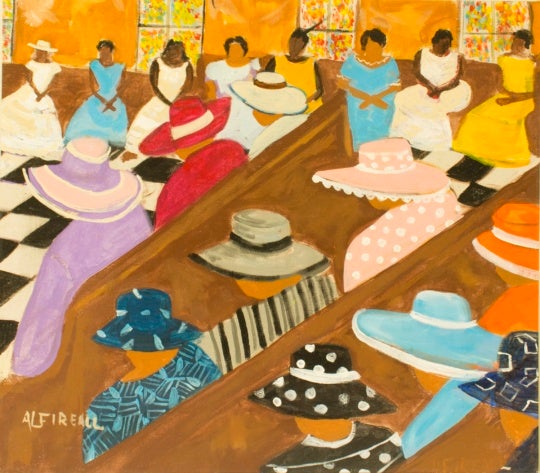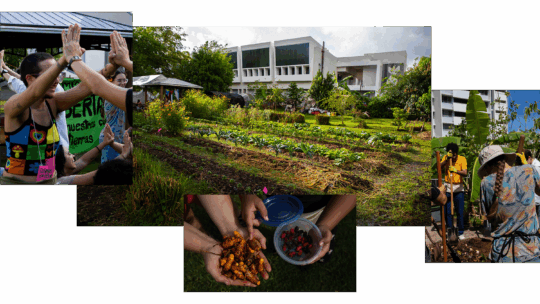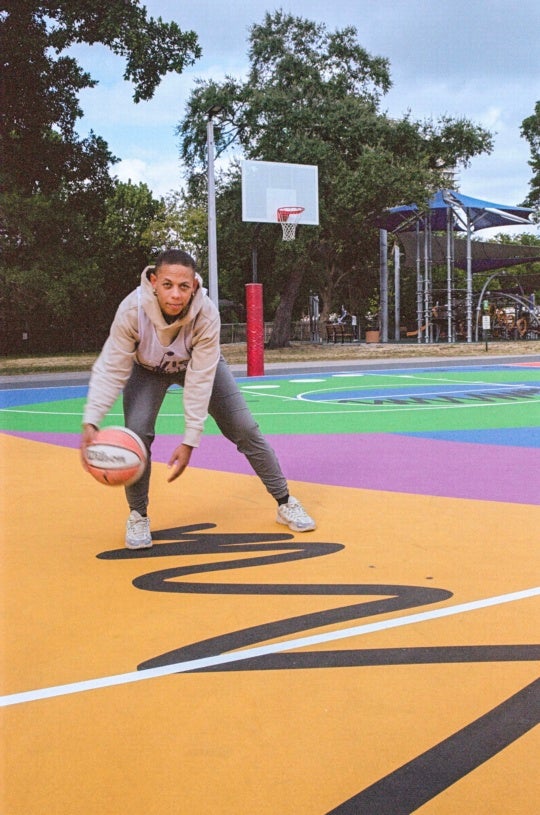
Wifredo Lam’s work from the 1920s through the 1970s is the heart of the High Museum of Art’s “Imagining New Worlds,” organized by Elizabeth T. Goizueta of the McMullen Museum of Art, Boston College. Of Chinese, African, and Spanish heritage, Lam (1902-1982) painted in myriad styles. Most influenced by Cubism and Surrealism, his work falls easily into the trajectory of modernism. Yet, in Lam’s hands, Cubism becomes soft and vaporous, and Surrealism finds itself under the spell of the Afro-Cuban Santería religion. The High Museum’s presentation puts Lam’s career in conversation with the recent works of Brooklyn-based José Parlá and Atlanta artist Fahamu Pecou.
Lam’s earliest work on view reveals a predictable phase of academic and realist influences. A modest sampling of still lifes, landscapes, and portraits in the first gallery gives insight into Lam’s early methods and occasionally insinuates the introspective, spectral turn his career will take. The Castilian cityscape Casa Colgadas (1927) transforms a functioning city into an undulating grid with the mien of ancient ruins—indeed, only a fleck of red paint suggests laundry drying in the sun and, by extension, human presence. Attractively flushed and dressed in scarlet, the portrait of an unidentified, affluent Spanish woman is both sanguine and ethereal: a vivid blue sky with a few, early stars contrasts the warm hues of her skin and dress. Emeralds sparkle in the sitter’s ear lobes; two tiny white pearls accompany a heavy, dark stone on her poised hand. White highlights in the woman’s eyes echo the stars and pearls. Her lace collar consists only of filmy, translucent brushstrokes. Despite the efficiency of those loose marks to suggest gauzy lace, the paint is murky and inexact: along with the celestial orbs of the stars, pearls, and eyes, it hints at Lam’s imminent departure from a world of appearances.

After a Parisian period in the late 1930s and early ’40s, Lam returned to Cuba via Martinique. The Cubist- and Surrealist-influenced style he had developed became increasingly idiosyncratic as he studied African art—de rigueur during this era and itself a primary influence on Cubism. But Lam also absorbed the politics of the pro-black, anti-French colonial Négritude movement (founded by the poet of Aimé Césaire, whom Lam met during this time) and Santerían motifs. Take, for example, L’Annociation (1944), a canonical subject in Western art history. Lam transformed the moment in which the angel Gabriel apprises the unwitting Virgin of her condition into a miasma of partially realized form. Conflated with a Santerían trickster deity, Elegguiá, Gabriel barely materializes from the shadowy skeins and stains of paint. The fleshy beauty apparent in the aforementioned portrait of the Spanish socialite has disappeared altogether. The Virgin Mary is instead a spindly, inhuman thing. As the exhibition wall text points out, there’s a seditiousness lurking in those cloudy mires of paint: the Afro-Cuban tradition eclipses the conventional Christianity of the West, and modernist abstraction collapses classical beauty. No doubt, Chris Ofili’s much later and much publicized makeover of the Virgin Mary finds a predecessor here.

The least referential, most severely abstracted paintings are hung sparsely towards the end of the Lam exhibition. Inspired by bamboo plants, Untitled (1958) recalls Jackson Pollock’s large, allover nonobjective compositions of the same decade—though Lam’s experimentation with the webs of paint seem stilted and too derivative. Across the gallery and painted mostly in variations of black, Près des Îles Vierges (1959) is a foggy ether of varying opacities. It is Lam at his best. Fragmentary animal and human forms appear in neon pastels and white and chalky black contour lines. Constellation-like, they interrupt the dark field sporadically, and the tension between the formless base layer and the skeletal upper stratum recalls Joan Miró’s biomorphic abstractions of the ’20s—albeit with more specificity. Nearby, the blue-and-white Grande Composition (1960) has a similar formula. In this large canvas, Lam’s bestial, abstracted humanoids take on a statuesque but flat solidity that lays the foundation for a series of prints made in the late ’60s and early ’70s in Italy. Indeed, in the last room devoted to Lam, a series of etching and aquatint prints depicts ghoulish creatures against simple backgrounds of mostly warm and neutral colors. Due in part to the medium, Lam achieves a graphic precision purposefully eschewed, perhaps, in his earlier work: it as if the half-formed bodies finally emerge as definite and unabashedly strange beings.
Rather than closing with Lam’s last works, the exhibition meanders to its end with the colorful abstractions of José Parlá and the visual and auditory works of Fahama Pecou. Parlá’s Segmented Realities (2014) and Bomboro Quiñ (2015) look like fragments of graffiti-encrusted walls. Architectural and imposing, they stand as heirs to Lam’s layered, abstract sensibility.


Representing another current of Lam’s oeuvre, the work of Atlanta-based artist and scholar Pecou has an explicitly critical edge that complicates and fights stereotypical notions of black male identity. A work on paper, Native Tongue/Ogbe Oyeku (2015), combines a self-portrait and Afro-Cuban god. Framing the figure is a faux cover of the 1940s Negro Digest—a periodical aimed at a black audience and made to counter the white focus of mainstream American media. Pecou (who recently had a show at MOCA GA) often employs a tight rendering style alongside loose, gestural passages. In this work, the flat passages of gold leaf pattern, such as those around the figure’s shoes, recalls the conventions of Byzantine icons. The combination suggests a multifaceted awareness of art, history, and cultural identity as nuanced as Lam’s own.
Finally, viewers may make unrecorded sound collages at a station designed by Pecou with sampled sounds and passages of Aimé Césaire’s Négritude poetry. The inclusion of Pecou and Parlá by the High nicely points to the oft unrecognized lineage of Lam—though a slightly larger mix of artists would expand Lam’s relevance to the present.
Rebecca Brantley lives in Athens, Georgia, and teaches for Piedmont College and the University System of Georgia. She is board president at ATHICA: Athens Institute for Contemporary Art. She is currently a participant in BURNAWAY’s Emerging Art Writers Mentorship Program.




